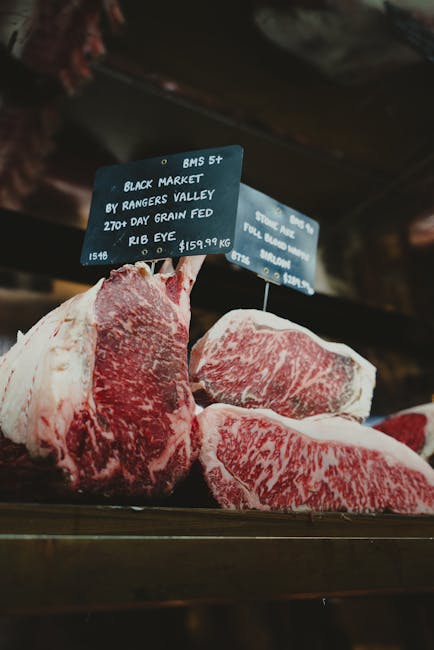Introduction
The Paleo diet, often dubbed the “caveman diet,” frequently gets simplified to just “eating meat.” While lean protein certainly plays a role, the true essence of the Paleo diet lies in a holistic approach to food and lifestyle that emphasizes whole, unprocessed foods. It’s a philosophy of reconnecting with our evolutionary roots and nourishing our bodies with what they were designed to thrive on. This article will explore the broader scope of the Paleo diet and why it’s much more than just a meat-centric eating plan.
Beyond the Steak: Understanding the Paleo Principles
Focus on Whole, Unprocessed Foods
At its core, the Paleo diet prioritizes foods that our hunter-gatherer ancestors would have had access to. This means:
- Lean Proteins: Grass-fed beef, poultry, fish, and wild game.
- Fruits & Vegetables: A wide variety of colorful produce, from berries to leafy greens.
- Nuts & Seeds: Healthy fats and essential nutrients.
- Healthy Fats: Avocado, olive oil, coconut oil.
The emphasis is on sourcing high-quality, nutrient-dense ingredients. Processed foods, refined sugars, grains, legumes, and most dairy are typically excluded.
It’s About What You *Don’t* Eat, Too
The Paleo diet isn’t just about adding certain foods; it’s also about removing potentially harmful ones. Common Paleo exclusions include:
- Grains: Wheat, rice, corn, oats. These can be inflammatory for some individuals.
- Legumes: Beans, lentils, peanuts. Contain phytates that can inhibit nutrient absorption.
- Dairy: Milk, cheese, yogurt. Can be problematic due to lactose intolerance and inflammatory potential.
- Refined Sugars: Found in processed foods, sodas, and candies. Provides empty calories and can contribute to inflammation.
- Processed Foods: Foods loaded with artificial ingredients, additives, and preservatives.
The Philosophical Foundation: Evolutionary Congruence
The Paleo diet’s philosophy stems from the belief that our bodies are genetically best suited to the foods our ancestors ate for millennia. The rapid introduction of grains, legumes, and processed foods into the human diet is argued to have created a mismatch between our genes and our food, potentially leading to chronic diseases and inflammation. By returning to a more ancestral way of eating, proponents believe we can optimize our health and well-being.
The Holistic Benefits of the Paleo Lifestyle
Improved Digestion and Gut Health
By eliminating common allergens and inflammatory foods, the Paleo diet can significantly improve digestion. The emphasis on fiber-rich fruits and vegetables also supports a healthy gut microbiome. Many report reduced bloating, gas, and other digestive discomforts.
Enhanced Energy Levels and Cognitive Function
The stable blood sugar levels achieved by avoiding refined carbohydrates and focusing on protein and healthy fats can lead to more consistent energy throughout the day. Many individuals also experience improved mental clarity and focus.
Weight Management and Body Composition
The Paleo diet can be an effective tool for weight management due to its focus on whole, unprocessed foods and its emphasis on protein and healthy fats, which promote satiety and help regulate appetite. It can also contribute to increased muscle mass and reduced body fat.
Reduced Inflammation
The exclusion of grains, legumes, and processed foods can help reduce inflammation throughout the body. Chronic inflammation is linked to many chronic diseases, so reducing it is a key component of overall health.
Implementing a Paleo Approach: Tips for Success
- Start Gradually: Don’t try to overhaul your entire diet overnight. Begin by eliminating one or two food groups at a time.
- Focus on Quality: Choose high-quality, sustainably sourced meats, fruits, and vegetables whenever possible.
- Plan Your Meals: Meal planning can help you stay on track and avoid impulsive unhealthy choices.
- Experiment with Recipes: There are countless delicious Paleo recipes available online and in cookbooks.
- Listen to Your Body: Pay attention to how different foods affect you and adjust your diet accordingly. Not everyone reacts the same way.
Conclusion
The Paleo diet is far more than just a meat-heavy eating plan. It’s a holistic philosophy rooted in evolutionary principles, focusing on whole, unprocessed foods that nourish our bodies and support optimal health. By emphasizing nutrient-dense foods and eliminating potential irritants, the Paleo diet can lead to improved digestion, enhanced energy levels, weight management, and reduced inflammation. While it may not be a perfect fit for everyone, its core principles offer valuable insights into how we can reconnect with our ancestral roots and create a healthier, more vibrant life.
